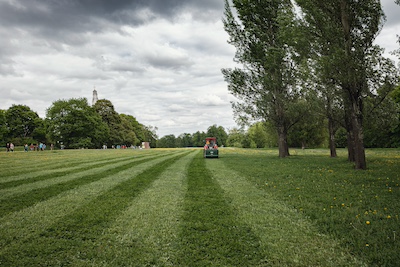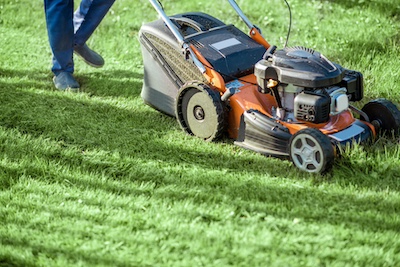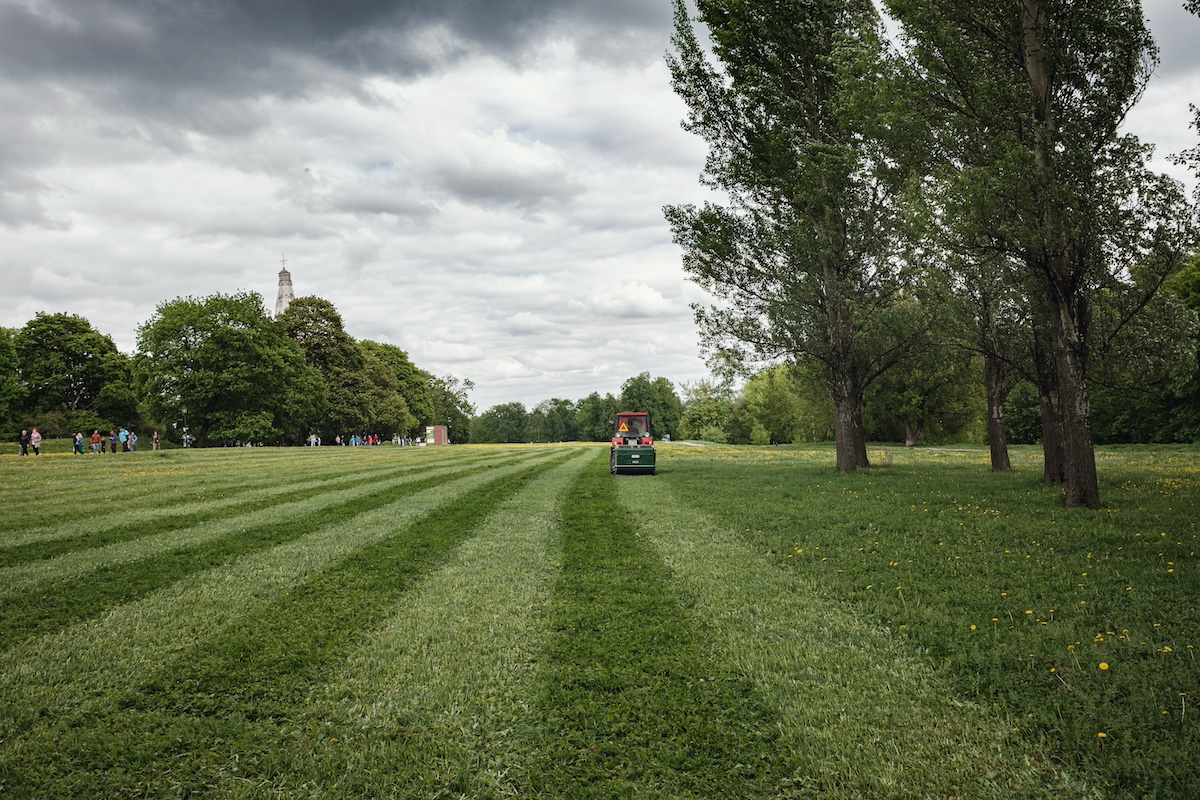The Correct Height for Trimming Your Lawn
The mowing height of your grass can significantly impact your lawn’s health. Trimming your lawn too short can hinder the grass’s ability to photosynthesize, leaving it vulnerable to diseases and weeds. On the other hand, letting the grass grow too tall can create a haven for pests and rodents.
To maintain a healthy balance, it’s generally recommended to keep most grass types around 2 to 3 inches tall. However, specific varieties may have slightly different requirements. For example, fine fescue thrives at about 2.5 inches, while Bermuda grass can be kept a bit shorter, around 1 to 2 inches.
To ensure optimal growth, follow the “one-third rule” when mowing. This means cutting off only the top third of the grass blade, which promotes stronger roots and a healthier lawn.
Cutting more than this can scalp the grass, impairing its growth. Be sure to adjust your mower’s blade height according to your grass type’s ideal length, and maintain consistency in mowing height from week to week.
During hotter months, you may let your grass grow slightly taller to help retain soil moisture. In cooler months, a marginally shorter cut might be appropriate for your turf type.
By adhering to these guidelines, you’ll not only improve your lawn’s resilience against weather changes but also promote a lush, healthy lawn that’s more enjoyable and functional throughout the year.

Mowing Pattern Variation
Alternating your mowing pattern isn’t just about aesthetics; it’s a practical approach to enhancing your lawn’s health and durability. Consistently mowing in different directions – vertically, horizontally, or diagonally – prevents grass blades from leaning in one direction, ensuring even growth and thickness.
This practice also helps avoid ruts in the soil caused by mower wheels repeatedly passing over the same area. Soil compaction can hinder root growth and nutrient absorption, negatively impacting overall lawn health.
To implement this strategy effectively:
- Alternate patterns each time you mow, switching from north-south to east-west, for example.
- If your lawn shape permits, try mowing in circular or half-circle patterns to distribute wear more evenly and achieve a polished look.
- When using a riding mower, be mindful of turning areas, opting for gentle curves to minimize damage to grass and soil structure.
By adopting these techniques, you’ll not only achieve an attractive, professional-looking lawn but also create a healthier environment for outdoor activities. Your grass will be better equipped to handle the stresses of changing weather and seasons.

Understanding and Timing Mowing Frequency
The frequency of mowing plays a crucial role in maintaining a healthy lawn. As seasons change and grass growth rates vary, adjusting your mowing schedule can help keep your yard looking its best while supporting the grass’s natural growth cycle.
During spring and early summer, grass tends to grow faster due to increased sunlight and rainfall. This rapid growth may require mowing more than once a week to ensure no more than one-third of the grass blade is removed at a time. Sticking to this rule promotes healthier grass and reduces stress, which can make your lawn more susceptible to diseases and pests.
As growth slows down in late summer and fall, you can reduce mowing frequency. Cutting the grass every two weeks may suffice during this period. However, mowing too often when growth is slow can be detrimental, reducing your lawn’s hardiness and resilience as it prepares for cooler months.
Keep in mind that each grass type has specific mowing frequency requirements. Cooler climate grasses may have different growth patterns compared to warmer climate varieties. Observing how your specific grass type responds to various mowing frequencies can help you establish an effective schedule that aligns with its natural growth cycle.
Environmental factors like drought or excessive rainfall can also impact grass growth, so be prepared to adjust your mowing frequency accordingly. By staying flexible and finding the right balance, you’ll encourage a healthy, resilient, and visually appealing lawn.

Create Your Dream Yard by Trimming Your Lawn Appropriately
By consistently following recommended mowing heights and patterns, you can cultivate a resilient and attractive lawn. These practices ensure your grass remains healthy, robust, and well-prepared to handle various weather conditions throughout the year.
- Huang B. Turfgrass Water Requirements and Factors Affecting Water Usage. Council for Agricultural Science and Technology (CAST). 2007;48:193-204.
- Steinke K, Ervin E. Turfgrass Ecology and Management at the Lawn-Soil Interface. Turfgrass: Biology, Use, and Management. 2013;56:827-842.
- Stier JC, Steinke K, Ervin EH, Higginson FR, McMaugh PE. Turfgrass Benefits and Issues. Turfgrass: Biology, Use, and Management. 2013;56:105-145.

